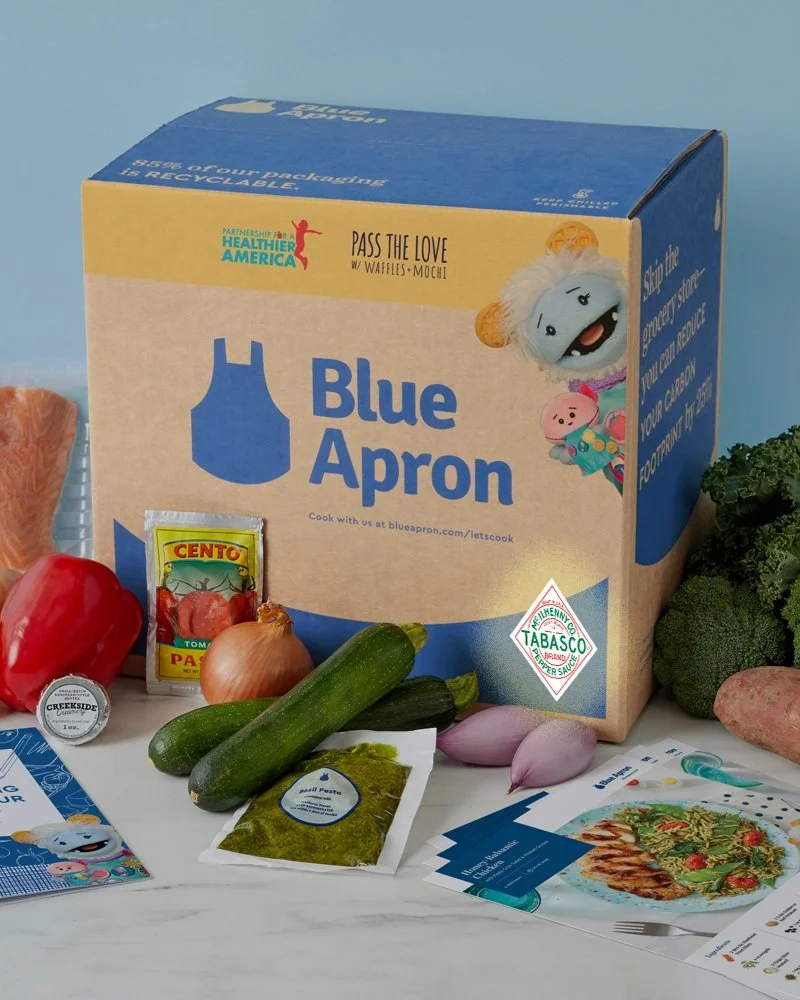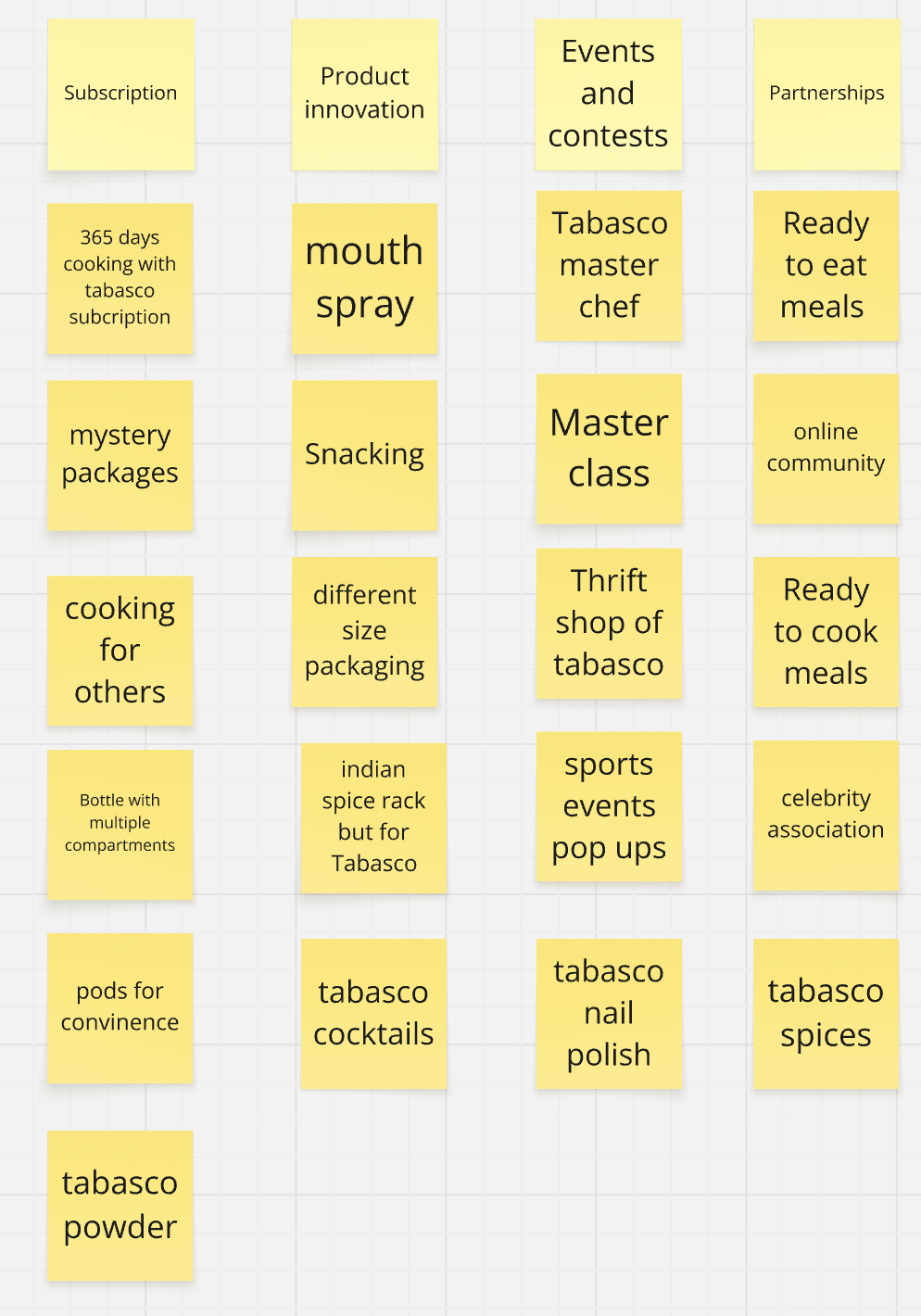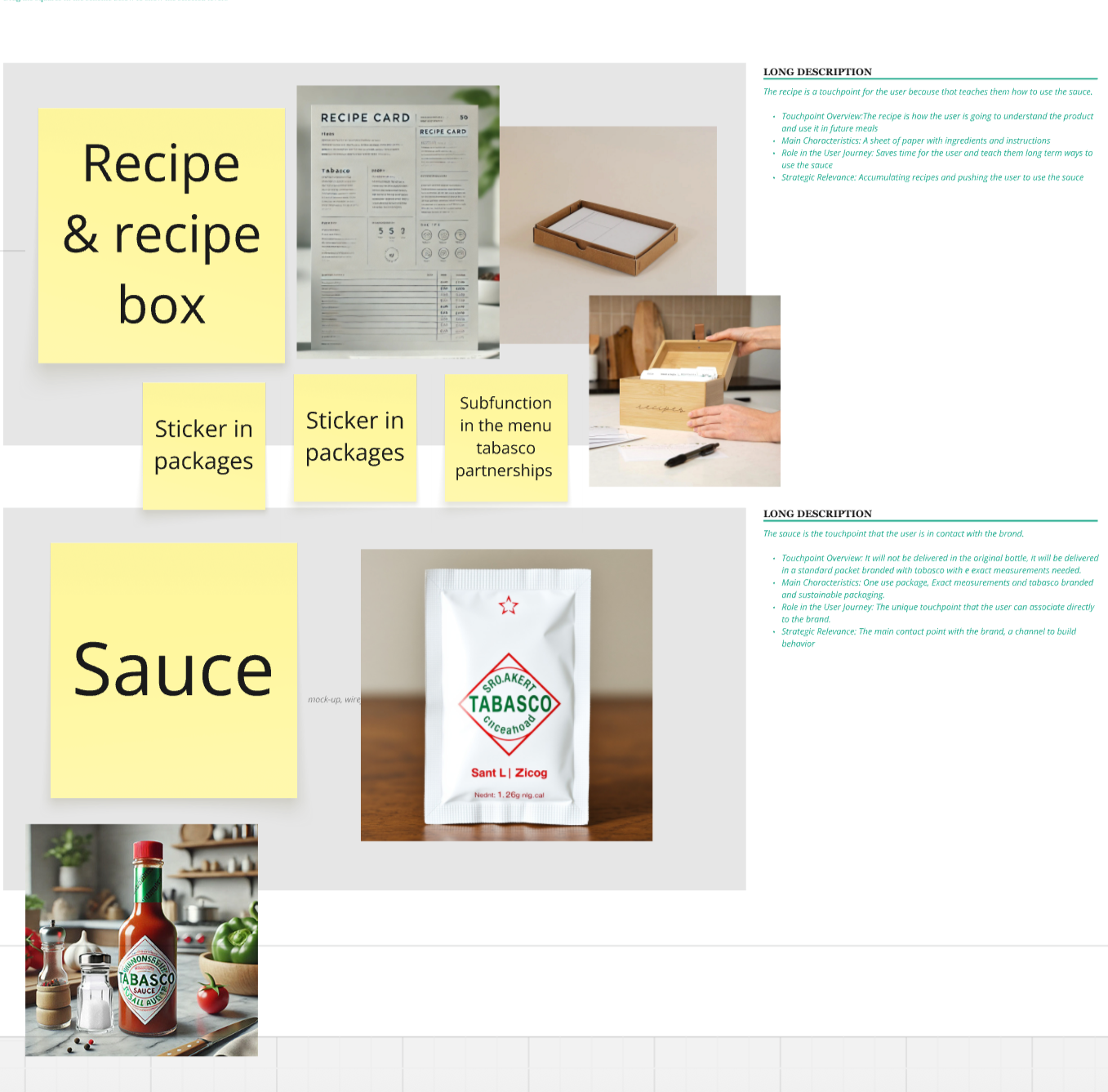
Tabasco x Blue Apron
In 2025, as part of a strategic design class challenge at Politecnico di Milano, my team explored how to position Tabasco as a modern kitchen cooking essential — the “new salt and pepper.” After conducting research, we proposed a subtle approach to increase daily use by recommending a partnership with Blue Apron, where Tabasco would be included in their meal kits. This idea blended strong brand storytelling with practical, real-world marketing.
DESIGN CONSTRAINTS
Design a Product Service System that promotes a brand in the food industry.
A ten minute presentation with personas, user journey and a actionable framework forward.
FINAL DELIVERABLES
TIME FRAME
2 weeks
INITIAL RESEARCH
We began by researching the Tabasco brand—its history, origin story, and overall product ecosystem, including both its core products and supporting offerings. For instance, we discovered that Tabasco even operates a museum and restaurant in the town where it’s produced, highlighting its strong brand heritage.
Next, we analyzed current market trends through three lenses: market dynamics, societal shifts, and technological developments. Key trends we identified included the rise of home cooking, more flexible lifestyles, and the popularity of fusion cuisine. These insights strongly informed our direction for a repositioning campaign, as they directly aligned with emerging behaviors in the food space.
TRENDS
-
As a societal trend, after COVID, we found that shared in person moments became much more important.
-
As a societal trend after COVID, individuals realized that they valued working from home and any place but the office.
-
Health has been the main focus in the past several years. Cooking influencers on Tik Tok and Instagram have become very popular, influencing viewers to try their own hand at cooking.
-
Social media has exposed people from all over the globe to different foods and not just the average restaurant food. People are now experimenting with flavors they never new existed, allowing for new experiments and inventions.
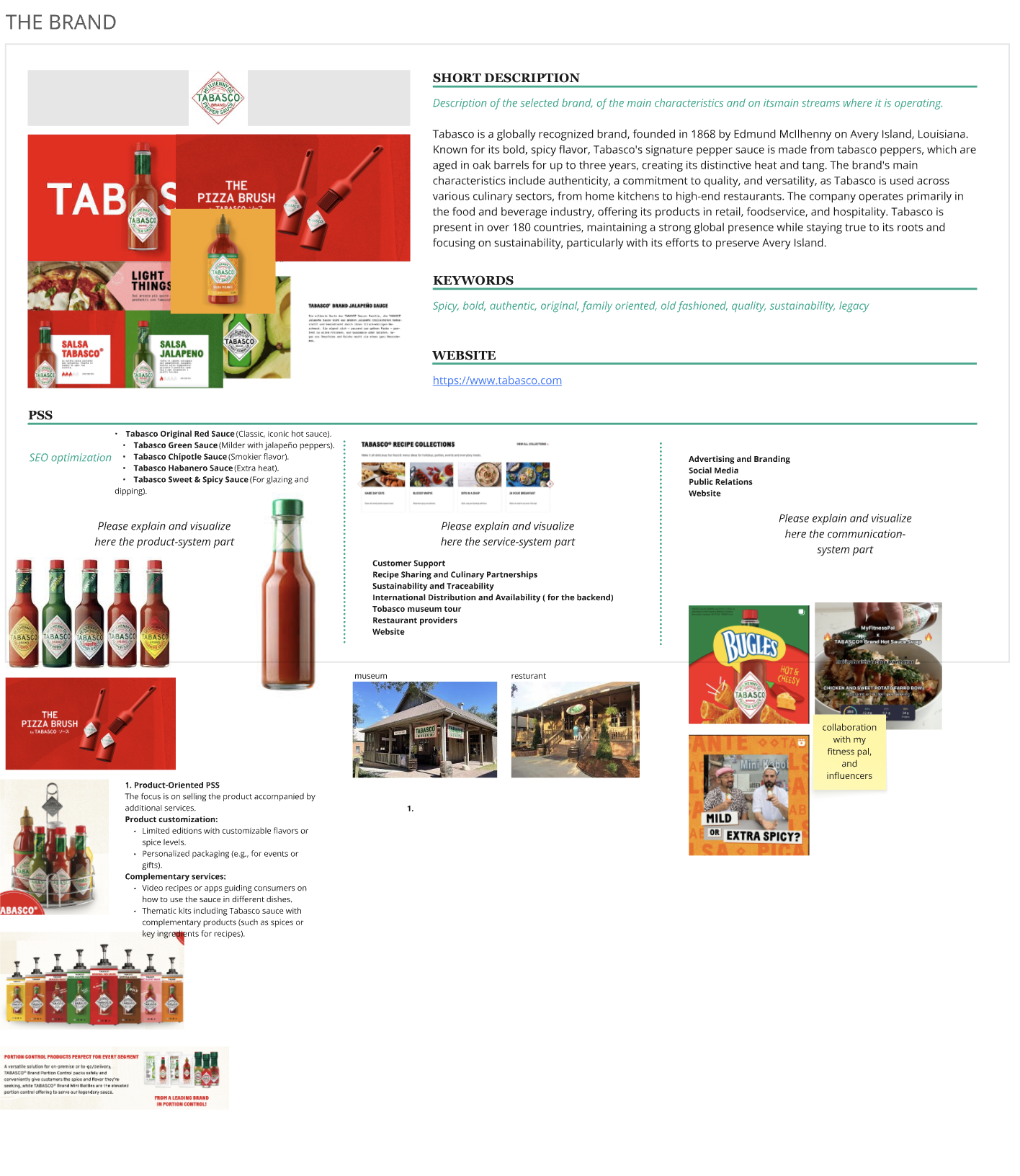
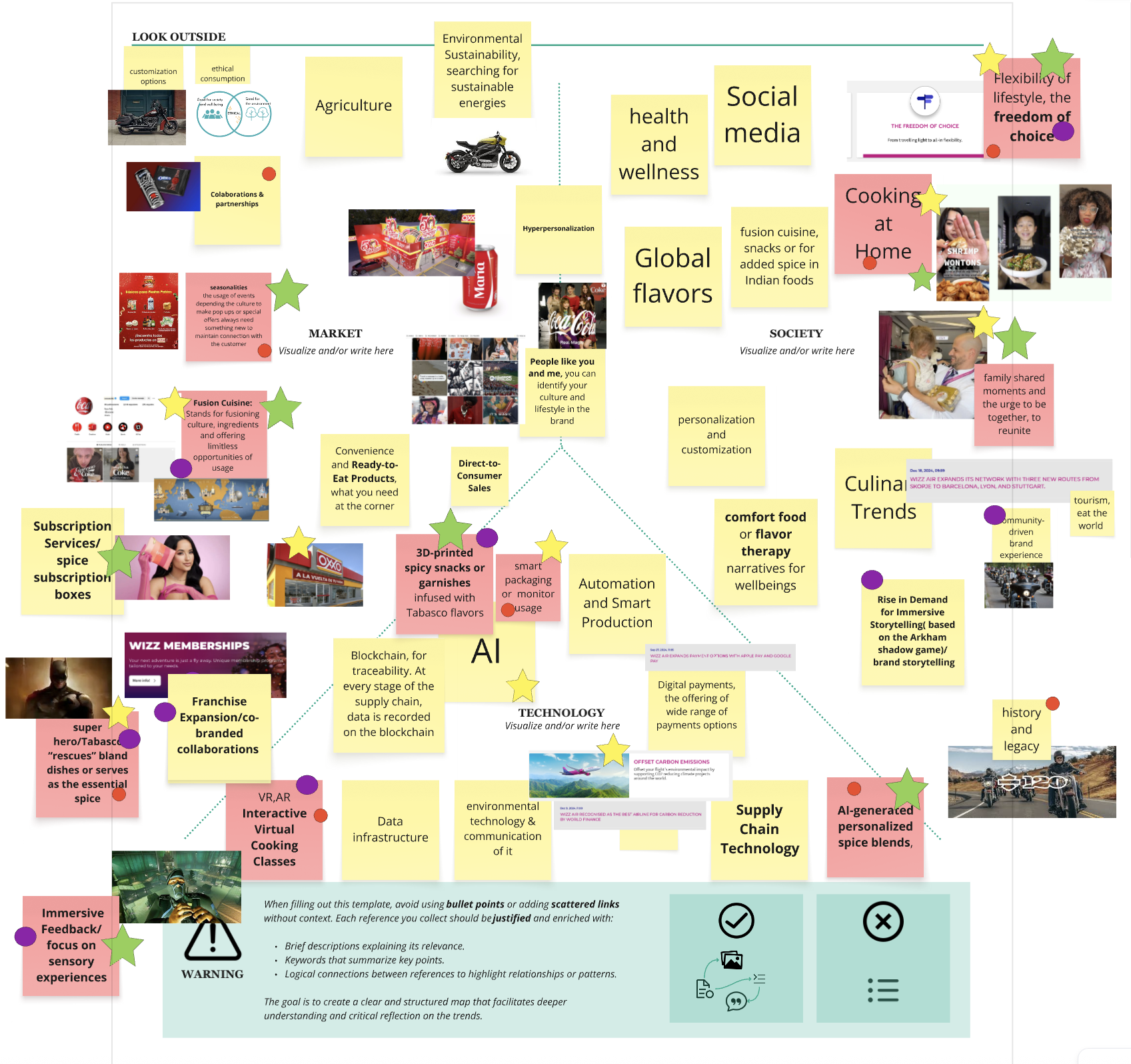
UNDERSTANDING THE USER
Afterwards, we developed two personas: a woman in her mid twenties always on the go, and a Head chef of a Creole restaurant. We chose these personas because we wanted to personify the current trends that emerged from our research: focus on health, cooking, and a desire for shared moments with loved ones.
Based on their lifestyles, we came up with what the users would “want” and “not want” based on the various trends that we researched. For example, Anna may seek variety in her food because of her use of social media and exposure to new flavor ideas, therefore having something that changes frequently would keep her more engaged.
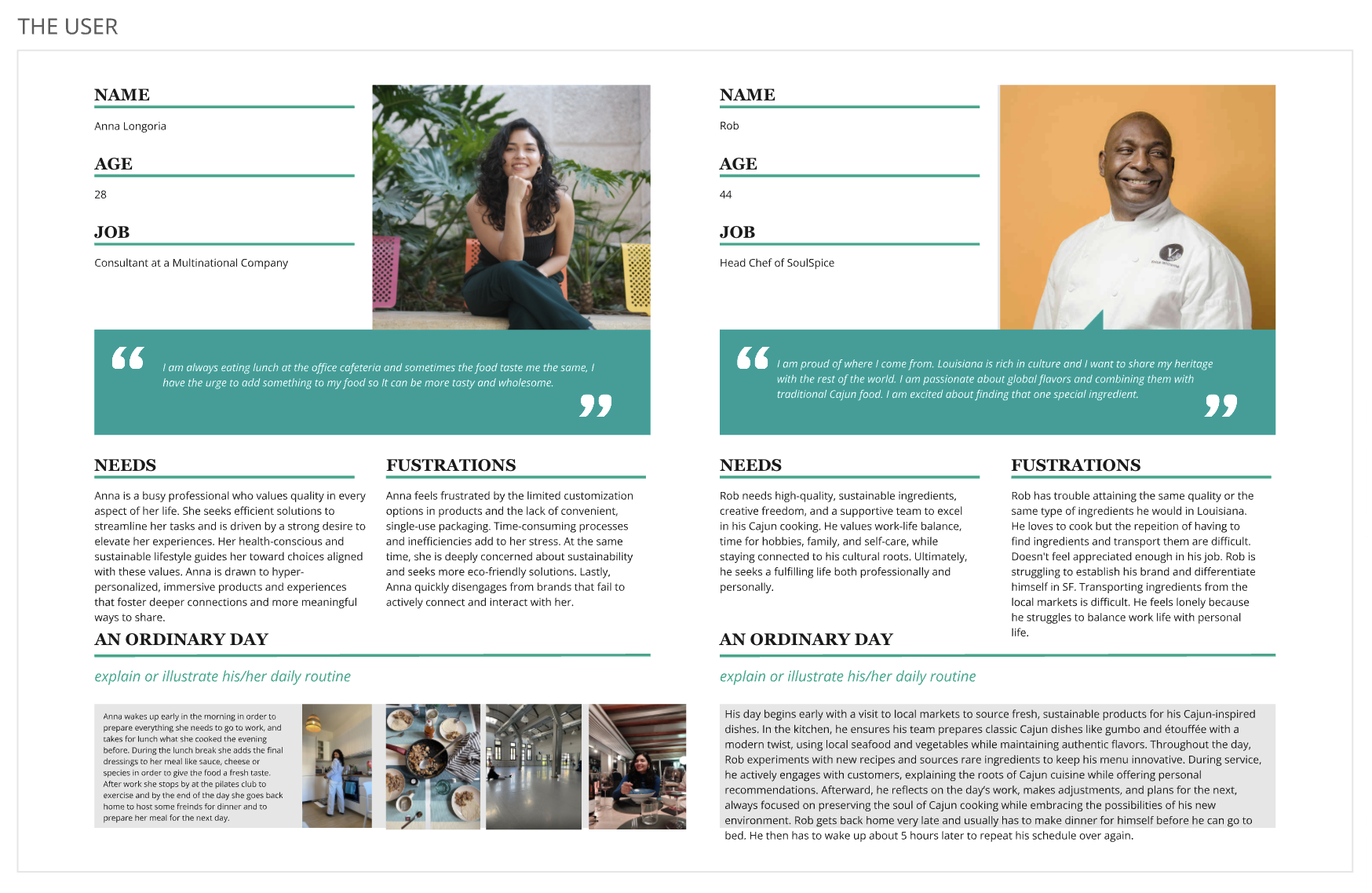

STATEMENT FOCUS
Then, we narrowed down our focus to three wants that presented the greatest opportunity, and then brainstormed How Might We statements.
Want #1: They are keen on having quick and convenient ways to add flavor to their food because they don’t want to waste time.
Want #2: They don’t want to compromise their love of cooking for the hassle of life’s demands.
Want #3: They want to be excited by new flavor offerings or innovations throughout the year.
BRAINSTORM
It was time for our brainstorm. Based on our research and personas, we came up with wild ideas to explore and further ideate. My preferred method of brainstorm are wild ideas, a large sheet of paper, and tons of sticky notes.
DEVELOPING THE PRODUCT SERVICE SYSTEM
We developed a statement that encompassed our direction that incorporated the “wants” and “don’t wants” as well as the trends that we discovered.
Our main development statement: “A product or service that that supports users to maintain their passion for cooking through the use of convenient flavors that will continuously excite and push them away from monotony.”
We also asked: “How do we make Tabasco an essential ingredient in the cooking process of Americans?”
Here I learned the importance of being specific for the development of the PSS because it informed the rest of our process. For example, we needed to specify what the exact product offer was, how it users would interact with it, and how it would be promoted. This is where also began to consider the physical and emotional touch points of the user.
We chose to partner with Blue Apron because it incorporated much of the trends we were looking at: the desire for home cooking, flexibility— because it required minimal effort to prepare, and the ability to change up meals easily.
The product: A closed Blue Apron box with Tabasco, ready to cook ingredients, and a recipe for the user to follow.
The service: A subscription based service through a website or app that delivers ready to cook meals right to your doorstep. You are able to choose your meals weekly and customize what you want.
The promotion: On the Blue Apron platform there will be an option for choosing hot meals that are in collaboration with Tabasco.
OFFERING MAP
We developed our offering map: company name/collaborators, primary offer, and the secondary offer. Since we wanted Tabasco to become as essential as salt and pepper, we created the concept of the New Holy Trinity, based on the Creole cooking base called “The Holy Trinity”. We found this fitting since Tabasco was founded in Louisiana.
Our primary offer focused on the product itself with the ready to cook meal subscription, the Tabasco incorporated ready to use meal kits, and sustainably packaged box.
The secondary offer included the promotion and the Tabasco in supermarkets.
USER JOURNEY
The User Journey came next after the creation of the product service system. We followed the journey of an established Blue Apron customer who was ordering meals for the week, and stumbled across Tabasco’s new offerings.
We highlighted the high points of the journey such as browsing meals, the selection of meals, and the cooking of meals. These high points coincided with a higher emotion such as curiosity and excitement.
TOUCHPOINTS
Our touchpoints included the recipe, recipe box, and the packet of Tabasco used in the recipe. We decided against using an actual bottle of Tabasco because it would be too much for one recipe. Especially, if users started to order various Tabasco recipes, we didn’t want too many bottles to build up in their kitchen.
FINAL OFFERING
Below is the final offering including the recipe box, collaboration logo, and website ordering experience.
I learned a lot during this exercise. I particularly enjoyed the ideation and development of the product service system, and the design of the offering. I enjoyed designing the final box and website experience.
We determined that this product promotion wouldn’t show immediate success results. The change in perception of Tabasco would take some time so we determined that measuring the success of this collaboration would have to be over a period of one to two years. We would determine immediate success through the ordering of Tabasco branded meals and then long term would be Tabasco sales going up.






JOURNEY MAP
Below is the final journey map of the user going through the steps of ordering, cooking, and enjoying their meal.








Contact me.
z.shaytannas@gmail.com
(617) 477-7602
Dallas | TX
